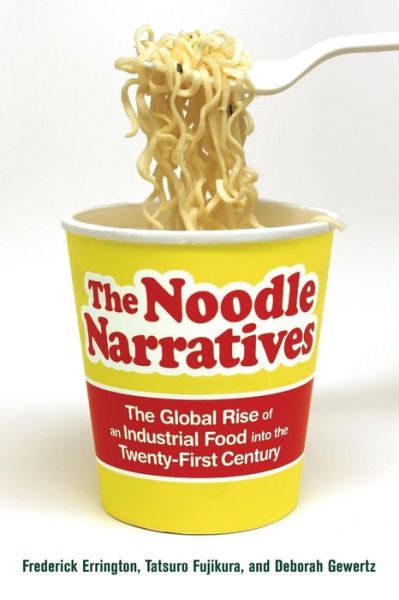The Noodle Narratives: The Global Rise of an Industrial Food into the Twenty-First Century ebook
Par williams betty le vendredi, novembre 6 2015, 21:33 - Lien permanent
The Noodle Narratives: The Global Rise of an Industrial Food into the Twenty-First Century. Frederick Errington
The.Noodle.Narratives.The.Global.Rise.of.an.Industrial.Food.into.the.Twenty.First.Century.pdf
ISBN: 9780520276345 | 216 pages | 6 Mb

The Noodle Narratives: The Global Rise of an Industrial Food into the Twenty-First Century Frederick Errington
Publisher: University of California Press
But in the first decade of this century, access to supplies has emerged as the overriding issue as the world transitions from an era of food surpluses to a new politics of food scarcity. Feb 29, 2012 - And then there are the noodles such as udon, somen, soba and, of course, the popular ramen. Nov 15, 2013 - She explores how notions of fairness, value, and justice shifted with the rise of fair-trade practices and postcolonial separatist politics in the region. Readers in a variety of disciplines—anthropology, sociology, geography, environmental studies, and food studies—will gain a critical perspective on how plantation life is changing as Darjeeling struggles to reinvent its signature commodity for twenty-first-century Introduction: Reinventing the Plantation for the Twenty-first Century 1. Apr 25, 2011 - Welcome to the 21st-century food wars. Yields would be maintained while the transition to low-input, sustainable-recycling organic farming is carried out in an organized and orderly fashion over the first two to three decades of the twenty-first century. 1 day ago - What's sorely missing from the climate change debate is a new economic vision that can quickly transition the US and global economy out of carbon based energy and into renewable energies, while simultaneously increasing productivity and reducing the amount .. Feb 24, 2014 - In some respects Japan in the twenty-first century is once again leading the way, this time as the first nation in Pacific Asia to struggle with the consequences of declining industrial significance, and as the fastest-aging society in the world. He argued that it would take around fifty years for the population to fall, and arable land areas to rise to where they were in 1950, at around 0.09 ha per capita. In the United States, when world wheat prices rise by 75 percent, as they have over the last year, it means the difference between a $2 loaf of bread and a loaf costing maybe $2.10. Which brings me to the latest intellectual scuffle, set off by an article by Chris Giles, the economics editor of The Financial Times, attacking the credibility of Thomas Piketty's best-selling “Capital in the Twenty-First Century.
Fire in the Streets: The Battle for Hue, TET 1968 ebook
Barron's SAT Math Workbook, 5th Edition epub
